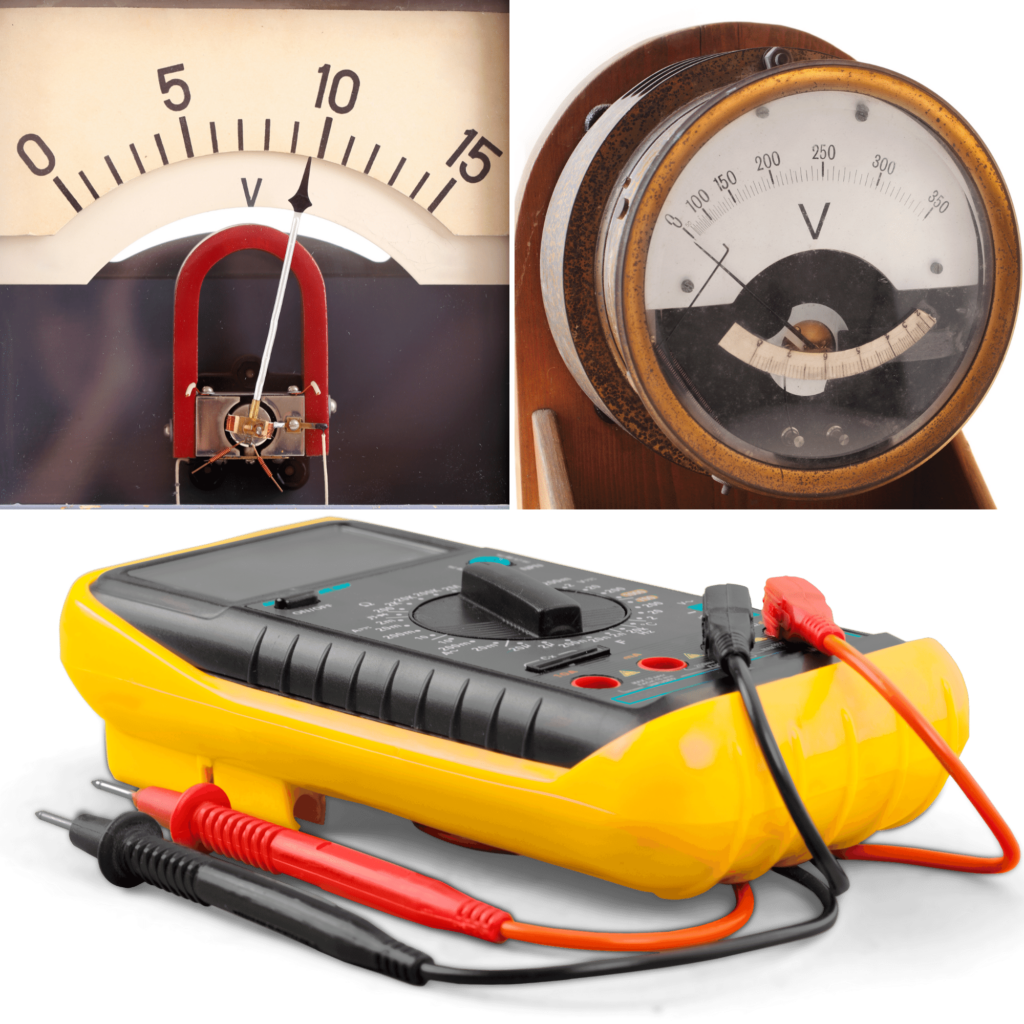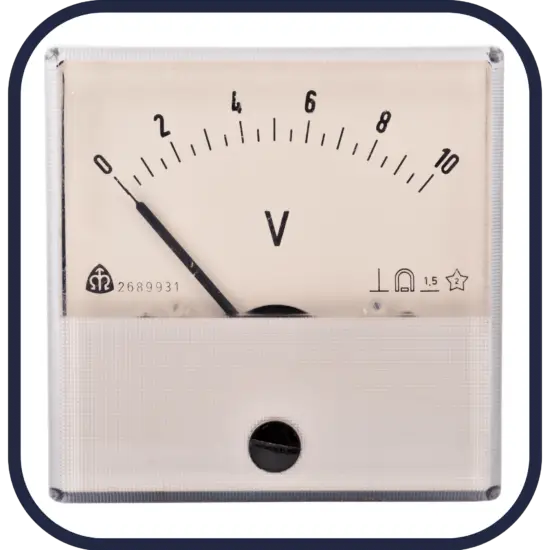30-second summary
Voltmeter
Voltmeters are instruments used for measuring the electric potential difference between two points in an electric circuit. To find the potential difference between any two points in the circuit, the voltmeter terminals are connected between those points without breaking or cutting the wire.
ΔV = Va – Vb
The most common types of voltmeters are:


Voltmeters are instruments used for measuring the electric potential difference between two points in an electric circuit. To find the potential difference between any two points in the circuit, the voltmeter terminals are connected between those points without breaking or cutting the wire. Voltmeters are connected in parallel. They are made in a wide range of styles, some separately powered (e.g. by the battery), and others powered by the measured voltage source itself. Their functionality is usually built into modern multimeters.
An ideal voltmeter would have infinite resistance, so connecting it between two points in a circuit would not alter any of the currents. Real voltmeters always have finite resistance, but a voltmeter should have large enough resistance that connecting it to a circuit does not change the other currents appreciably. Voltmeters that can measure a potential difference of 1 μV are common, and sensitivities down to 10-12 can be attained. Digital meters can be made with high accuracy, typically better than 1%. Specially calibrated test instruments have higher accuracies.
Types of Voltmeters
The different types of voltmeters are determined by the construction principle and measurement types, which are:
- Permanent Magnet Moving Coil Voltmeter – PMMC. Permanent Magnet Moving Coil Voltmeter – PMMC is also known as the D’Arsonval meter or galvanometer, and it is used to determine the angular deflection in a uniform magnetic field to determine the current flowing through the coil.
- Moving Iron Voltmeter. Moving-iron voltmeters are generally used to measure alternating voltages and currents. In moving-iron instruments, the movable system consists of one or more pieces of specially-shaped soft iron, which are so pivoted as to be acted upon by the produced by the current in the coil.
- Digital Voltmeter – DVM. Digital voltmeters are voltmeters that display AC and DC voltage values and use discrete numbers instead of pointer deflection, they are preferred over analog voltmeters. DVMs are usually designed around a special type of analog-to-digital converter called an integrating converter.
- Electrodynamometer. Electrodynamometer types of instruments are used as a.c. voltmeters and ammeters are both in the range of power frequencies and lower part of the audio power frequency range.
- Rectifier Type Voltmeter. In general, a rectifier is an electrical device that converts alternating current (AC), which periodically reverses direction, to direct current (DC), which flows in only one direction. The reverse operation is performed by the inverter. These voltmeters are used to measure either AC or DC.
- Induction Type Voltmeter. Induction type voltmeter works on the principle of mutual induction. It can only be used for the measurement of ac power, whereas the electrodynamometer type can be used for both ac and dc.
- Electrostatic Type Voltmeter. An electrostatic voltmeter is the only voltmeter to measure voltage directly rather than by the effect of current. This voltmeter is used to measure large electrical potentials without making physical contact and so there is no electrostatic charge transfer or loading of the voltage source.

